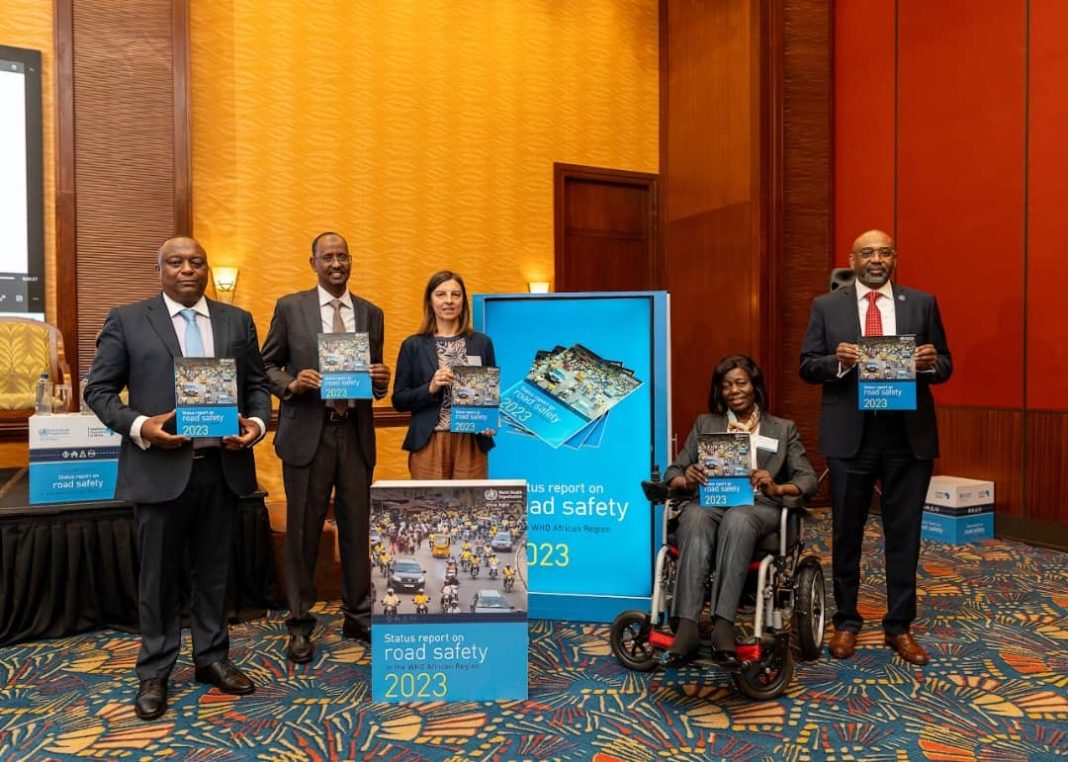By Catherine Nambi
For 27 years Bright Oywaya- has been living with the effects of a road crash caused by a reckless driver on one of the Kenyan roads.
” When a road crash happens, it affects the entire family, I am still paying for that one thing 27 years later. The Social, economic, health and family burden is enormous” laments Oywaya

The World Health Organisation (WHO) Road Safety Status Report for the African Region launched in Nairobi today 16th July 2024 indicates an increasing public burden of road traffic fatalities and injuries in the region.
According to the report the region holds the highest fatalities in the world at 19.4 deaths per 100,000 population and has experienced a 17% increase in fatalities since 2010 from 192 682 to 225 482 deaths
The report further highlights that the Africa region has the highest proportion of pedestrian deaths accounting for one third of the global fatalities.
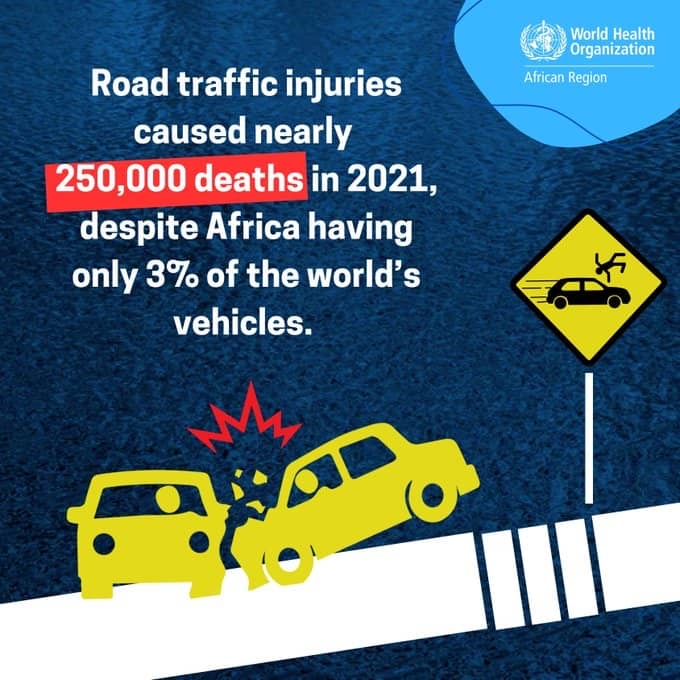
Crash victim Oywaya says there is need for urgent and concerted efforts from all stakeholders to improve the safety of road users in the region.
Dr. Abdorahmane Diallo the WHO Representative, Kenya says the statistics from the report are a reminder of the challenges and a call to action towards prevention and reduction of road crashes on the African continent.
Dr Diallo notes, ‘improving Road infrastructure, enhancing data, ensuring equitable access to post-crash care are essential components of a Road Safety strategy. The rapid increase in vehicle registration in Africa, particularly of used vehicles, needs stronger regulations,’
Dr Diallo cites the need for the region to harness its collective expertise and implement bold evidence-based interventions to save lives and ensure safer roads for all.
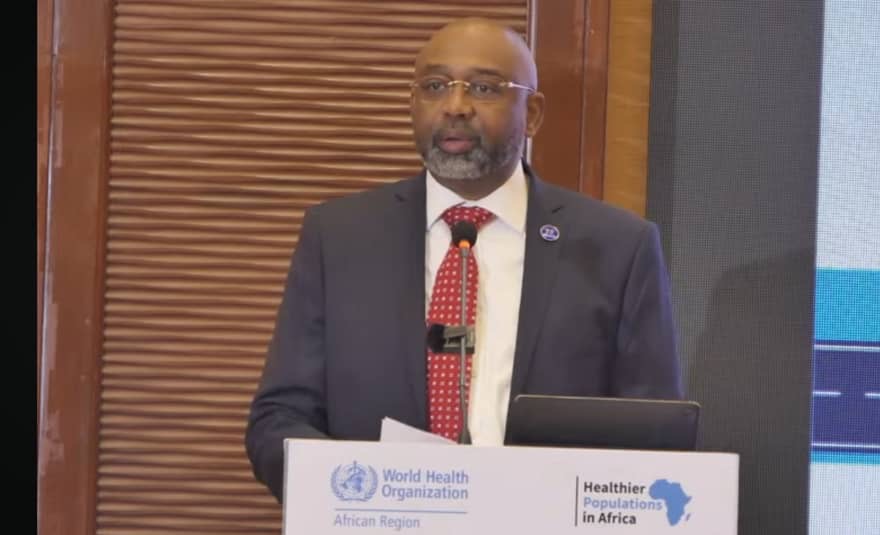
Janene Tuniz the Sustainable Mobility Officer at UN Environment Programme (UNEP) Kenya expressed concern that although about 80% of Africans use walking as the main means of transport not so much effort has been channelled towards to ensuring the safety of pedestrians on the road.
‘African cities are walking cities but not walkable cities. There is a need for more research on the experience of pedestrians in Africa to advance transport systems that serve them and to ensure cleaner, greener and safer cities,’ says Jeanne Tuniz.
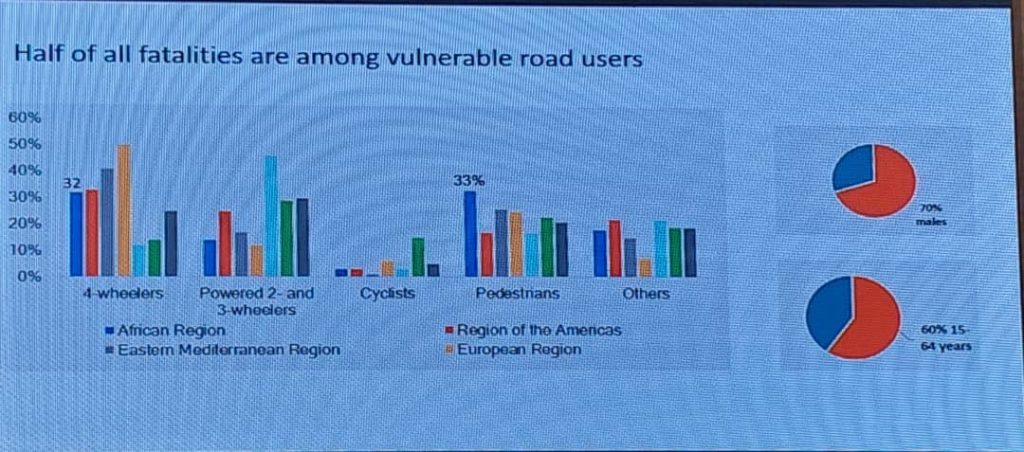
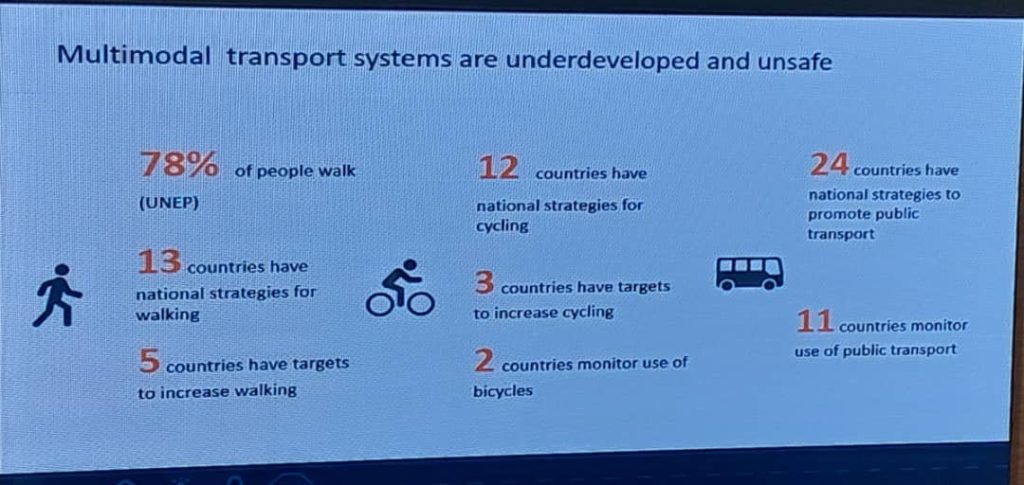
The WHO emphasizes that the strategies and planning for transport systems in the Region must give more consideration to non-motorized transport users such as pedestrians and cyclists.
Causes of accidents in Africa
According to the report preventing road traffic deaths and injuries requires an integrated strategy that addresses the key behavioural risk factors that increase the vulnerability of people to serious injuries and death and these include drunk or Drug driving which according to report is a growing concern and there is a growing body of evidence on the extent of the problem and effective interventions to reduce the burden.
The other is Speed which according to the report is directly correlated with the likelihood of a crash and the severity of injuries leading to death. For every 1% increase in mean speed, there is a 4% increase in the fatal crash risk and a 3% increase in the serious crash risk
the report also cites noncompliance with helmet use, seatbelt use as other risk factors.
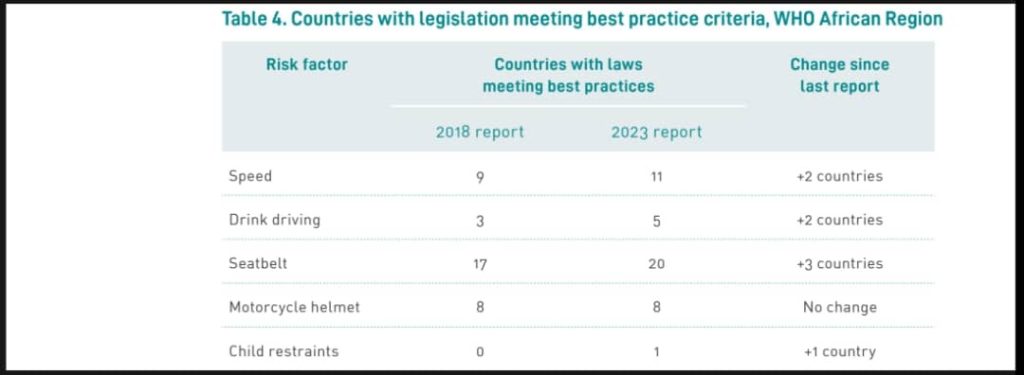
Recommendations
The report suggests that contextualized on the key behavioural risk factors can significantly reduce the burden of road traffic deaths and injuries. According to the report Road infrastructure design plays a critical role in ensuring road safety outcomes.
WHO recommends that by facilitating safe road user behaviour and providing an environment that reduces the severity of crashes that do occur, safe road infrastructure can substantially reduce the occurrence of crashes, deaths and serious injuries.
The report further highlights that appropriate road design that prioritizes the protection of vulnerable road users should include features like protected bicycle lanes and pedestrian-only zones to not only reduce the risk of serious injury and death but also encourages the use of sustainable forms of transport
It is also cited that road safety inspections and the star rating of roads can provide mechanisms to ensure that safety is a top priority in the design and management of new and existing roads.


